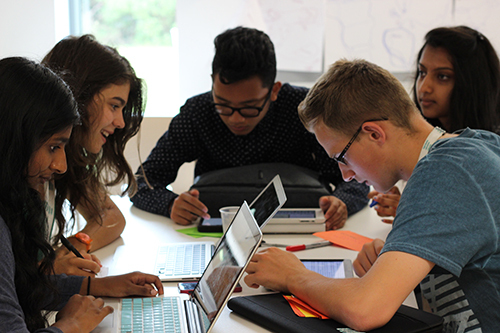
A new OECD report, Schooling Redesigned: Towards Innovative Learning System, shows how to take schools, classroom, teachers, and students out of their default state of seclusion and into the expanding network of global and diverse learning systems. In the Forward of the new report, Andreas Schleicher argues that it is this modern form of interwoven learning that is the site for contemporary innovation in education. And yet, as of now, innovative learning environments remain the exception to the rule.
This report could change that. By pointing to the strategies that work, it paves the way for educators to bring their schools into the 21st century. This means educators with diverse interdisciplinary practices that can intelligently acknowledge multiple levels and platforms for educational development.
In my interview which follows, David Istance, the study’s author and senior analyst at OECD’s Centre for Educational Research and Innovation (CERI), explains these different levels (micro, meso, and meta) and how they can be integrated into traditional classrooms. This innovative re-conceptualization of education is of pertinent value for teachers, parents, and administrators who want to shift out of defaults that no longer work. The new approach enables us to think about the micro-relations of the smallest parts of education in direct connection to the macro-systematic aspects of education. A change of this nature would allow for a new way to measure the progress of school systems that discards the flawed reliance on test scores and looks for integral and diverse relationships within the school and the greater world. Istance believes if followed, this would “promote horizontal connectedness across learning activities and subjects.”
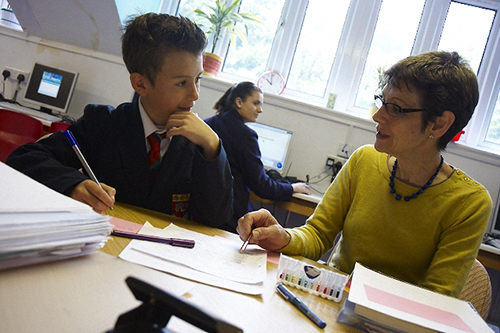
David, Can you briefly describe the difference between the learning environment micro level, the meso level and the meta level of a school or school system?
OECD’s Innovative Learning Environments (ILE) project began with the need for terms and concepts defined in terms of learning and its organisation. We wanted an alternative to the formal institutions of schooling, with its familiar distinctions between the classroom level, the school level, the district level and the system level. This is because we wanted to focus on how learning is organised and might be organised in new situations, not on how schooling is currently organised when many blame its bureaucratic structures as a brake on innovation. We wanted to look at horizontal collaborative relationships, not just vertical hierarchies. Indeed, in the 21st century a great deal of the relevant learning does not take place in schools at all.
We started with the learning environment level as the basic unit as developed through earlier OECD/ILE work. A learning environment is conceptualised around the “pedagogical core”, itself made up of four elements (learners, educators, content, and resources) and four dynamic connectors (pedagogy, time, how learners are grouped, and how educators are grouped). Included in our concept of a learning environment is leadership as design, informed by evidence of learning, and rich partnerships with others.
The “meso” level is comprised of the many compounds of learning environments in networks, communities, chains and initiatives, connecting up learning environments. This middle level is critical for growing, diffusing and sustaining innovative learning.
The “meta” level is the aggregation of all the learning environments and connected arrangements at the micro and meso levels. As we are not defining these concepts using the familiar school institutions, the boundaries of this wider meta level may or may coincide with what might be called the “school system” (which itself is not precise as it may refer to, say, a state system or to something larger like a national system).

Culture change, clarifying focus, capacity creation, collaboration, communication technologies, and change agents are emphasized in the report. Do you have any idea about how far away schools today are from reaching these goals?
It is impossible to generalise across systems, and even within systems there is huge variation. Increasingly, the importance of collaboration, capacity creation and professional learning, and the effective use of communication technologies is being recognised. But there is a big step from that to innovative and powerful learning environments being typical of schools at scale, applying the seven learning principles identified by OECD through its review of the learning sciences. Even where the general approach is most accepted, we are still looking more at exceptional innovation than system-wide transformation.
This may sound a rather imprecise answer but there are good reasons for that. For one thing, networks, communities of practice and strategies are constantly emerging and evolving, but also disappearing – they come and go. Growth depends on the emergence of healthy new learning-focused networks being sustained and outstripping the inevitable decline or disappearance of others. A second reason is that many of the features of dynamic, innovative learning systems are hard to measure – we don’t have agreed indicators on many of the relevant dimensions let alone robust measures.
But we have to start somewhere. In our report we drew up a list of broad indicator areas which, if developed, would start to give measures of how near or how far school systems are from the OECD/ILE framework.
- High learning activity and motivation levels
- Prominent learner agency and voice
- Educators actively discuss learning strategies and practice collaboration
- Educators are highly knowledgeable about learning
- Mixed, personalised pedagogical practices
- Inter-disciplinarity, curriculum development and new learning materials
- Widespread innovative applications of digital resources and social media
- Cultures of using learning evidence and evaluation
- Sophisticated information systems and individual portfolios
- New evaluation and assessment metrics
- Diverse partners highly visible
- A thriving, vibrant meso level
- Dense global connections
How interesting it would be to have measures on some or all of these, as well as the more conventional education statistics and indicators!

How can teachers and administrators work to better understand and build the complicated web of connections needed to facilitate an up-to-date and effective school (a meta learning eco-system, as you call it)? How important is the government in this “redesign” and what should they do?
The simplest answer is to say: “apply the OECD/ILE ‘7 + 3’ framework”. The 7 are the seven essential design principles identified in the 2010 The Nature of Learning report. We propose that, in order to be most effective, schools and other learning environments should attend to all the following design principles:
- Make learning central, encourage engagement, and be where learners come to understand themselves as learners.
- Ensure that learning is social and often collaborative.
- Be highly attuned to learners’ motivations and the importance of emotions.
- Be acutely sensitive to individual differences including in prior knowledge.
- Be demanding for each learner but without excessive overload.
- Use assessments consistent with these aims, with strong emphasis on formative feedback.
- Promote horizontal connectedness across learning activities and subjects, in- and out-of-school.
Subsequent analysis of actual cases of innovative learning environments led us to add three more dimensions – hence “7+3” – to optimise the conditions for putting the principles into practice: i) Innovate the pedagogical core; ii) Become “formative organisations” with strong learning leadership; iii) Open up to partnerships.
We have placed strong emphasis on design, and that means leadership; in complex systems, leadership becomes increasingly challenging because it will often involve new players as well as those in the institutional school system.
Government leadership remains fundamental, however, because of its legitimacy, breadth, and capacity to unlock resources. Governments have a privileged role in starting and sustaining change, and in regulating, incentivising, and accelerating change. But this does not have to mean “micro-managing”. We have reviewed some fascinating examples of governments launching and establishing conditions for innovation and then leaving it to others to lead and manage. Here are two.
New Zealand’s “Learning and Change Networks” is a government-initiated strategy to establish a web of knowledge-sharing networks among schools, families, teachers, leaders, communities, professional providers, and the Ministry of Education. The network participants work collaboratively to accelerate student achievement in years 1 to 8 and address the equity challenge.
Austria’s “New Secondary School” (NMS) reform was initiated by government in 2008 and has since been mandated to be phased in completely by 2018. Yet, it must happen in schools to be effective and it works through school-based change agents (Lerndesigners) who themselves work as networks. There is a newly-established National Center for Learning Schools (CLS) that provides materials and organisation.
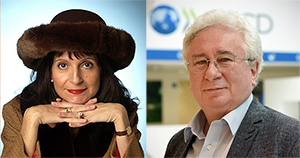
Join me and globally renowned thought leaders including Sir Michael Barber (UK), Dr. Michael Block (U.S.), Dr. Leon Botstein (U.S.), Professor Clay Christensen (U.S.), Dr. Linda Darling-Hammond (U.S.), Dr. MadhavChavan (India), Professor Michael Fullan (Canada), Professor Howard Gardner (U.S.), Professor Andy Hargreaves (U.S.), Professor Yvonne Hellman (The Netherlands), Professor Kristin Helstad (Norway), Jean Hendrickson (U.S.), Professor Rose Hipkins (New Zealand), Professor Cornelia Hoogland (Canada), Honourable Jeff Johnson (Canada), Mme. Chantal Kaufmann (Belgium), Dr. EijaKauppinen (Finland), State Secretary TapioKosunen (Finland), Professor Dominique Lafontaine (Belgium), Professor Hugh Lauder (UK), Lord Ken Macdonald (UK), Professor Geoff Masters (Australia), Professor Barry McGaw (Australia), Shiv Nadar (India), Professor R. Natarajan (India), Dr. Pak Tee Ng (Singapore), Dr. Denise Pope (US), Sridhar Rajagopalan (India), Dr. Diane Ravitch (U.S.), Richard Wilson Riley (U.S.), Sir Ken Robinson (UK), Professor Pasi Sahlberg (Finland), Professor Manabu Sato (Japan), Andreas Schleicher (PISA, OECD), Dr. Anthony Seldon (UK), Dr. David Shaffer (U.S.), Dr. Kirsten Sivesind (Norway), Chancellor Stephen Spahn (U.S.), Yves Theze (LyceeFrancais U.S.), Professor Charles Ungerleider (Canada), Professor Tony Wagner (U.S.), Sir David Watson (UK), Professor Dylan Wiliam (UK), Dr. Mark Wormald (UK), Professor Theo Wubbels (The Netherlands), Professor Michael Young (UK), and Professor Minxuan Zhang (China) as they explore the big picture education questions that all nations face today.
The Global Search for Education Community Page
C. M. Rubin is the author of two widely read online series for which she received a 2011 Upton Sinclair award, “The Global Search for Education” and “How Will We Read?” She is also the author of three bestselling books, including The Real Alice in Wonderland, is the publisher of CMRubinWorld, and is a Disruptor Foundation Fellow.
Follow C. M. Rubin on Twitter: www.twitter.com/@cmrubinworld


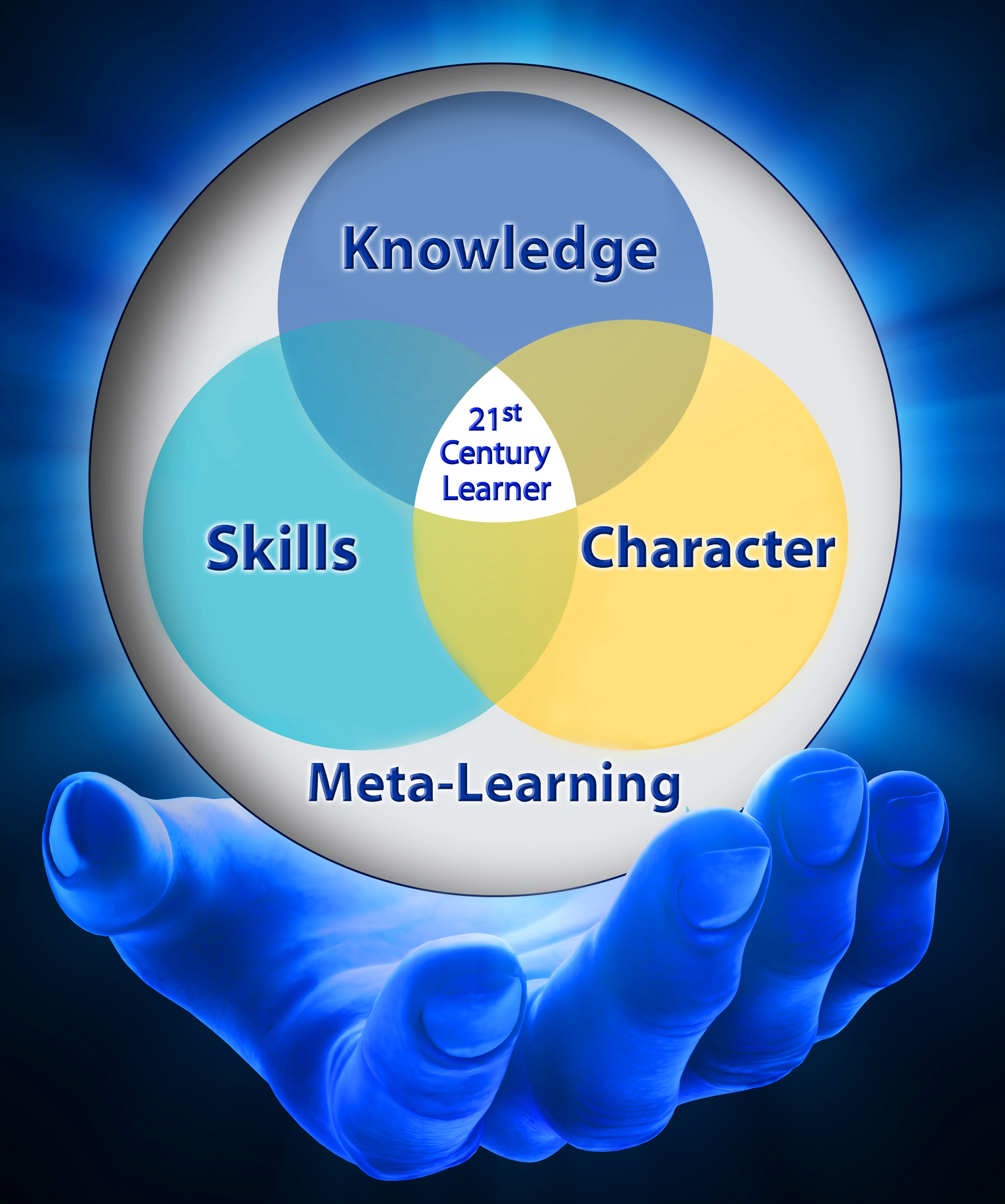


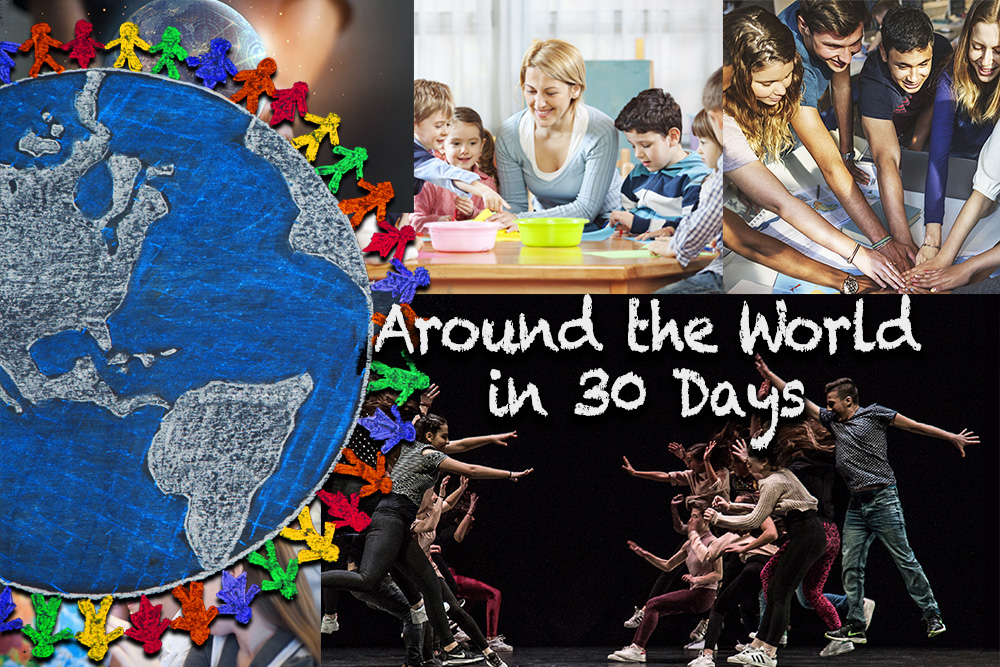
Recent Comments